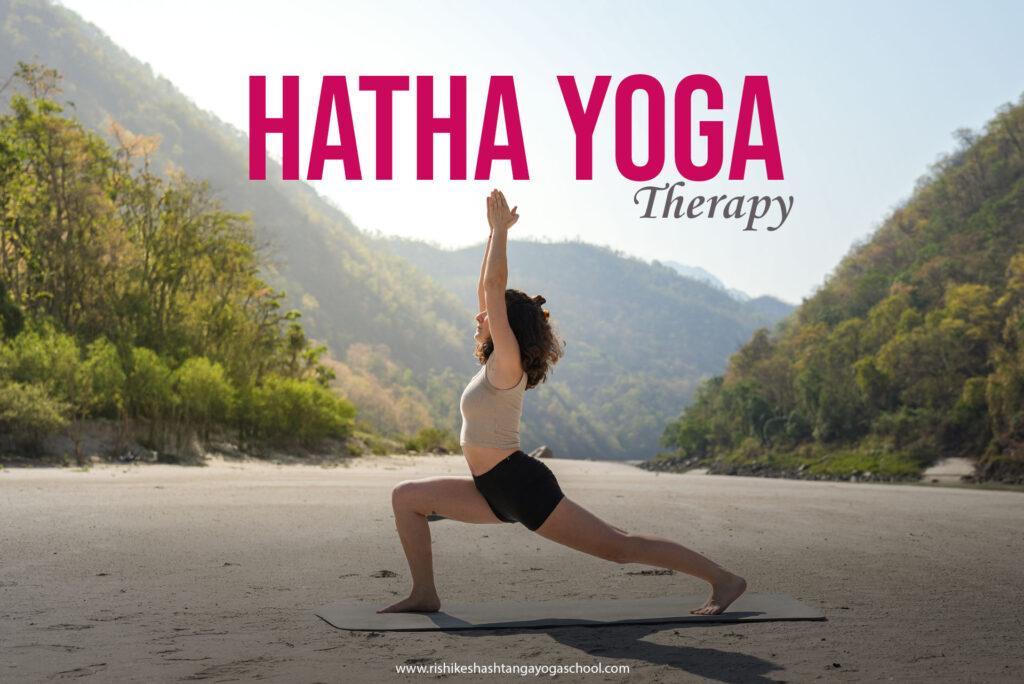
Hatha Yoga comes like a quiet companion. No big promises, no fancy poses, just this steady, grounding practice that asks us to slow down and really feel what’s going on inside. And that’s what made it feel so healing. It doesn’t ask us to become something new. It helps us to come back to ourselves. And it works for pretty much anyone, like from little kids to grandparents. Doesn’t matter if you can touch your toes or not. You just do what you can, and that’s enough. What really matters is being present and being okay with staying in a pose a little longer than feels comfortable.
And in that stillness, something quietly shifts. You start to get a sense of how your body actually feels; maybe your shoulders are tighter than you thought, maybe your breath feels stuck, or one side of your body feels heavier. It’s not about fixing any of it. It’s just about noticing. And that awareness, over time, starts to change everything.
In that awareness, you start finding control. And with control, there’s grace, not just in the way you move but in how you respond to life.
Why Hatha Feels Right
Whenever people ask where to go deeper in yoga, the answer is Rishikesh. There’s something in the air there. A lot of people head to Rishikesh for yoga teacher training thinking they’ll just learn to teach, but somewhere along the way, they end up learning a lot about themselves too.
Hatha often becomes a big part of that process because it’s where everything begins. It’s the base, the roots. All other styles come from it. It’s the root from which other styles have grown. Practicing it in a traditional space, especially in places like Rishikesh where the energy is naturally supportive, brings something deeper. It’s not just about learning to teach; it becomes a personal journey.
Yoga Therapy and Hatha: Real Healing
Hatha can be used to support the body in deep ways in the therapeutic side of yoga. But it’s never just about that one asana working on one thing. That’s not how yoga works. Every asana works on your whole system: your breath, your energy, your mental state, your digestion, and your emotions. The key is awareness. How present are you in that asana? How are you breathing? Where is your mind?
Because when you’re completely aware, even a simple pose becomes your meditation.
Some postures we often use in therapy:
- Sarvangasana and Halasana – These help when there are thyroid concerns. They stimulate the neck area and support the hormonal system.
- Setu Bandhasana – This is useful for people with lower back pain. It also helps with the digestive system and calming the nervous system.
- Supta Baddha Konasana – We can be helpful for anxiety or exhaustion. The body feels supported, and it becomes easier to let go.
- Balasana – A simple pose, but very grounding. It helps people feel safe, especially when emotions are strong.
- Cat-Cow —good for anyone with a stiff back or shallow breath. It gently opens the spine and makes people more aware of their breathing.
- Viparita Karani – A favourite when someone is feeling burnt out or restless. It brings the energy down, helps with circulation, and quietens the mind.
It’s Not the Muscles That Train; It’s the Brain
A lot of people think yoga is mainly about flexibility or movement. But what really changes, over time, is the way the nervous system responds. When the breath slows down and the body feels supported, something shifts. It’s not dramatic. It’s just this quiet feeling that you don’t have to be on guard. The body stops bracing. You feel a bit more at home in yourself. And when the nervous system feels safe, healing begins.
Stress Comes from the Mind, Relief Comes from the Body
We’re always thinking, overthinking, planning, worrying, and stress builds up like noise in the head.
When you’re holding a pose, really tuning into your breath or feeling the stretch in your thighs and spine, your mind just stops racing. The to-do list fades, and all that’s left is you in that moment. You’re present, and that presence brings peace.
Even Surya Namaskar, when done slowly with awareness, becomes a moving meditation. It’s not about finishing 12 rounds. It’s about how aware you are during even one.
Yoga Is Not a Workout
Somewhere along the way, we started treating yoga like a workout. But yoga isn’t about exhausting the body. It’s about softening. About slowing down the mind, reconnecting with the breath, and remembering who you are under all that tension.
That’s what Hatha shows us. Hatha is something many people return to when things feel scattered or heavy. It brings a sense of quiet – nothing dramatic, just space to breathe and settle.
For anyone starting out or even considering a teacher training, this is often the best place to begin. Hatha doesn’t rush. It doesn’t demand. It just creates a space for being present.
Sometimes, that’s enough.
